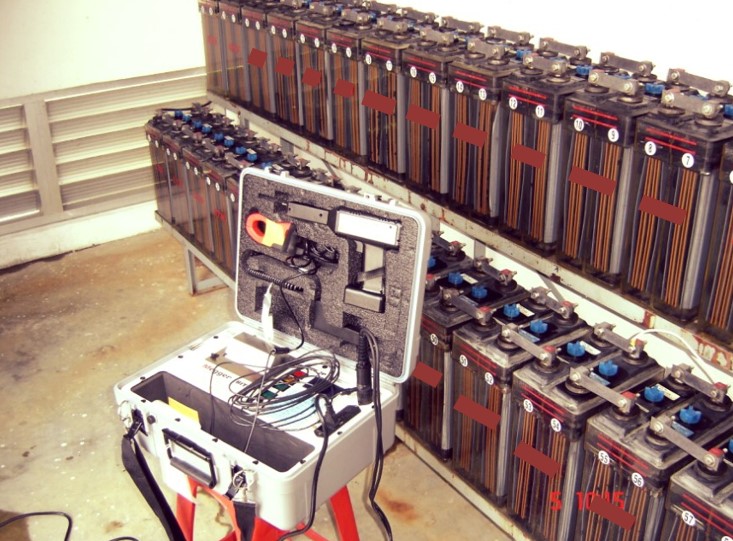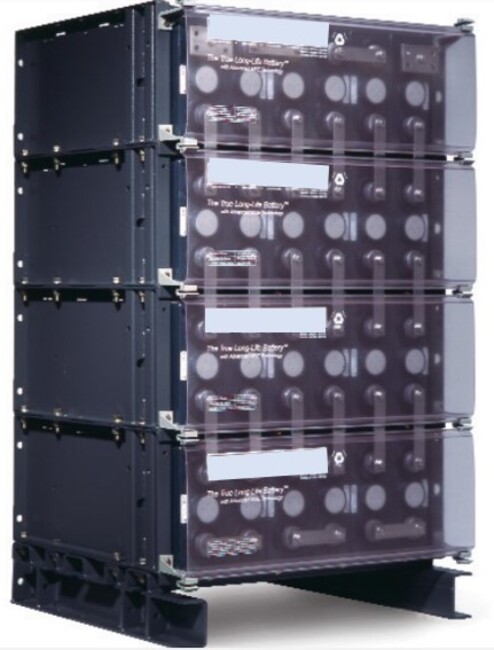AC/DC Power
Stationary battery discharge test: advantages and disadvantages
Performing tests on the battery bank is the most suitable way to understand its operational status. This way, you can avoid unpleasant surprises when you need them, especially when they function as a DC backup system. The discharge test is one of the most reliable.
With it, you assess batteries «in the field» and under real operating conditions. Let’s see what it consists of, as well as its advantages and disadvantages!
What is the battery bank discharge test?

In simple terms, this battery state test consists of simulating the equipment’s operation in a controlled manner, taking note of the parameters of its behavior throughout the test. The main parameters are cell voltage and temperature.
To avoid risking the system’s power supply, the process is carried out by feeding the rectifiers with a motor-generator group. This guarantees that there will be no service interruption due to AC power failure.
Finally, you connect a «test load» device to the battery bank, similar to the one shown below.

Then you simply adjust the current consumption according to the system’s voltage and take the corresponding measurements.
To understand the steps to follow, we recommend our post Stationary battery bank discharge test.
Advantages discharge test
- It allows you to understand the operational behavior of the equipment under real operating conditions
- It is a safe method for battery evaluation
- This battery status test helps identify any defective cells or elements
- It can be conducted without jeopardizing the operations of the served system
- Once the results are analyzed, the measures to be taken to ensure the integrity of both DC backup and overall power systems can be established.
- Typically, this test is used to determine the actual charge in terms of current, power, and equipment.
Disadvantages discharge test
- The lifespan of the battery bank is determined by the number of deep discharges it undergoes, and the discharge test counts as one of them.
For this reason, it is recommended that this test is performed no more than twice a year
- It may accelerate the deterioration of cells that are already defective
- It involves additional costs for fuel and maintenance of the generator set.
Additional safety recommendations for the system
To minimize the inherent risk associated with this, like all tests, we suggest the following safety recommendations:
- Conduct the battery status test during off-peak hours with lower amperage consumption. Typically, this is done between 23:00h and 04:00h
- Use the highest test current that the system has experienced in the previous 24 hours
- Ensure that technical personnel from each area supported by the battery bank are present. Likewise, the procedure should be carried out by specialized technicians to address any contingencies immediately.
Finally…
If you want to learn everything you need to know about this component, we recommend reading the article Batteries and their generalities as well as all those associated with this series. You’ll surely find this content engaging!
In our post Interpretation of discharge test results we will analyze the measurements taken. This will help us determine the functional state of the battery bank and each of its cells.
In the energydcac blog, you will find relevant information on this and other topics related to DC, AC, and solar energy. Don’t miss out on reading them!
Our Course on sizing and designing DC power systems for telecommunications and critical systems will explain everything you need to know, including calculations and selection. Here’s a preview of its content. Secure yours!
Image source
- sbsbattery.com
- energydcac.com

